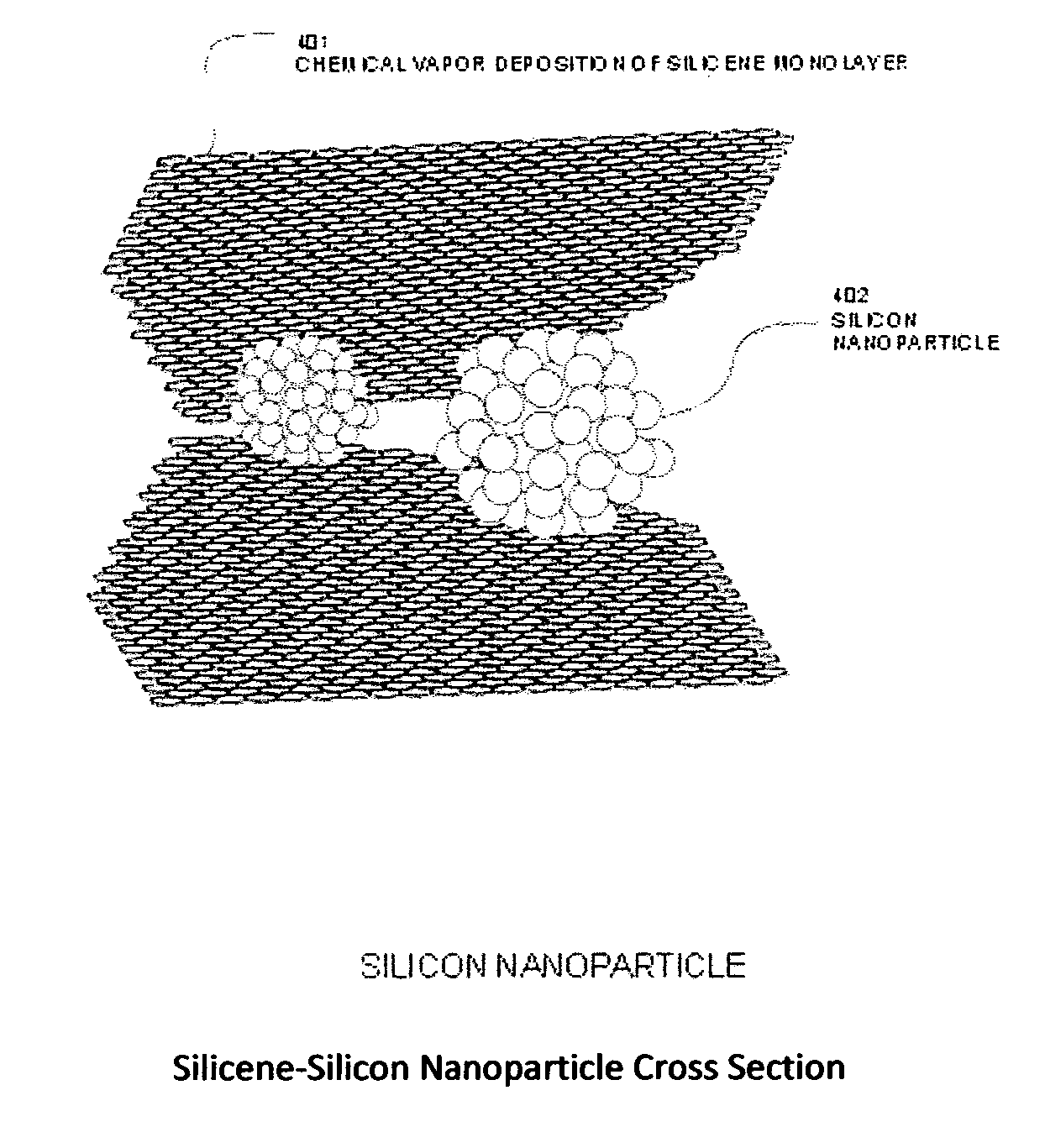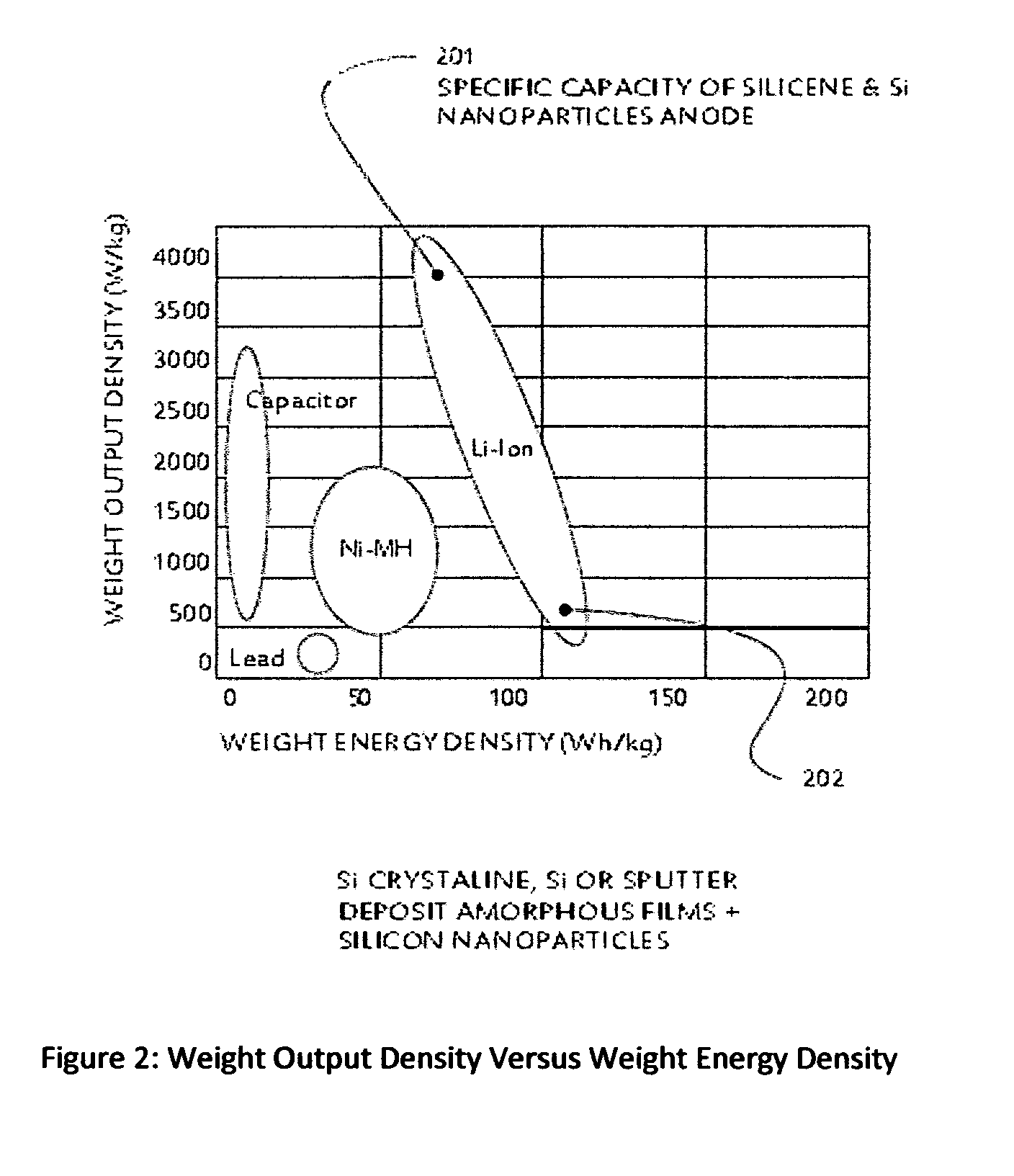Silicene nanocomposite anode for lithium ion battery
a lithium ion battery and nanocomposite technology, applied in the field of lithium ion batteries, can solve the problems of loss of volumetric energy densities and limited approach, and achieve the effect of excellent structural integrity and rapid thermal anneal methods
- Summary
- Abstract
- Description
- Claims
- Application Information
AI Technical Summary
Benefits of technology
Problems solved by technology
Method used
Image
Examples
Embodiment Construction
[0027]Components of the state of the art lithium ion battery include, a metal foil current collector made of either aluminum or copper [107,102], anode and cathode particles [101,109], conducting carbon particles [109] which is composed of graphitic material consisting of layers of graphene. A polymer separator [105] which separates the anode and cathode physically from each other. An electrolyte [106] consisting of organic and salt additives. In LIB, two materials with differing electron affinities are used as cathode and anodes. Electrons flow from one electrode to the other outside of the battery, the electrolyte closes the internal part of the battery by its ions.
[0028]One of the current embodiments the cathode consists of a LiMO2 or LiFePO4 layer structure [102] which serves as the source of Li+. The electrolyte [106] provides a conductive medium to enable Li+ to move between the electrodes. During discharge [109] positive Li Ions move from the anode to the cathode [101] (which...
PUM
| Property | Measurement | Unit |
|---|---|---|
| Fraction | aaaaa | aaaaa |
| Thickness | aaaaa | aaaaa |
| Thickness | aaaaa | aaaaa |
Abstract
Description
Claims
Application Information
 Login to View More
Login to View More - R&D
- Intellectual Property
- Life Sciences
- Materials
- Tech Scout
- Unparalleled Data Quality
- Higher Quality Content
- 60% Fewer Hallucinations
Browse by: Latest US Patents, China's latest patents, Technical Efficacy Thesaurus, Application Domain, Technology Topic, Popular Technical Reports.
© 2025 PatSnap. All rights reserved.Legal|Privacy policy|Modern Slavery Act Transparency Statement|Sitemap|About US| Contact US: help@patsnap.com



